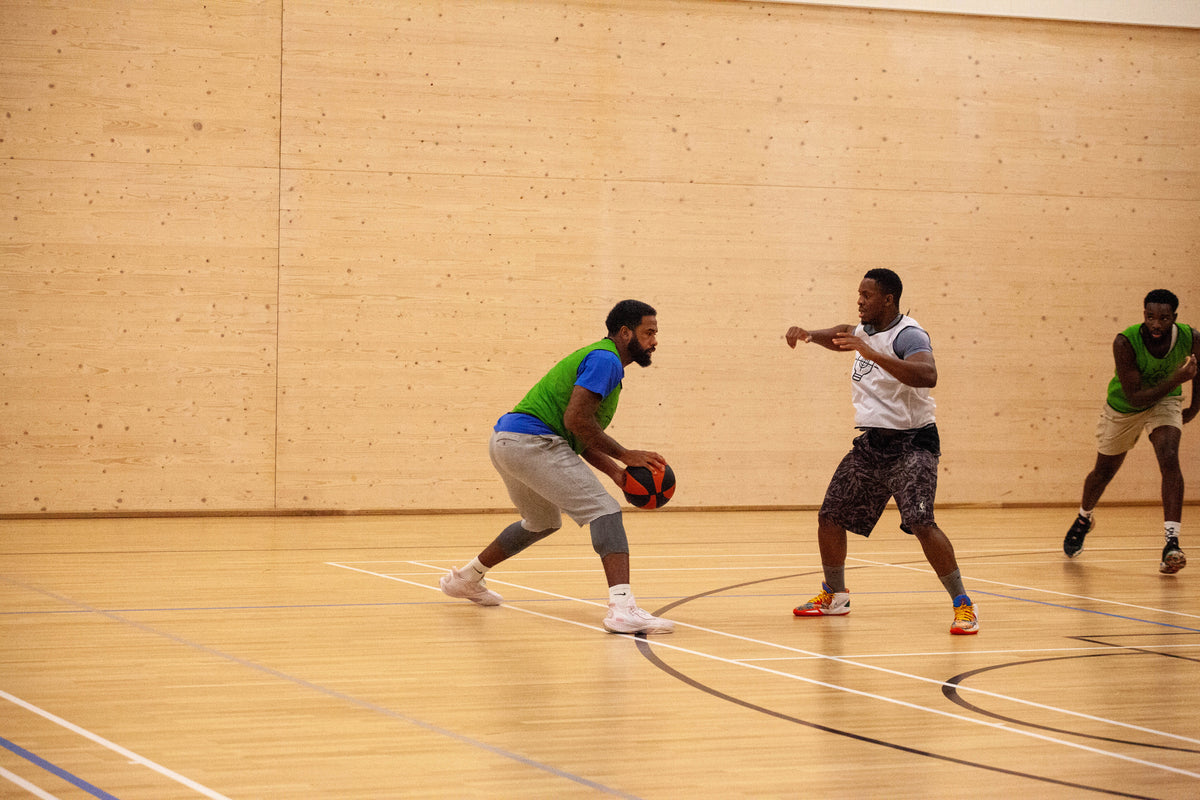
Cutting-Edge Technology Improving Basketball Training and Gameplay in 2025
|
|
Tempo di lettura 3 min
|
|
Tempo di lettura 3 min
Basketball in 2025 is a game transformed by technological innovation. From advanced analytics to immersive training tools, the sport has embraced cutting-edge technology to elevate players' performance, refine strategies, and enhance the fan experience. Here's a deep dive into the latest breakthroughs revolutionizing basketball training and gameplay this year.
AI has become the backbone of basketball strategy and performance improvement. Advanced systems analyze vast amounts of data from games and practices to provide actionable insights, including:
Player Performance Metrics: AI tracks shooting percentages, defensive effectiveness, and fatigue levels in real-time, offering detailed reports that coaches and players can use to optimize performance.
Injury Prevention: Machine learning algorithms detect movement patterns that might lead to injuries, enabling preventative measures before they occur.
Game Strategy Optimization: AI analyzes opponents' tendencies, helping teams craft highly effective game plans.
Smart basketballs equipped with embedded sensors are game-changers for skill development. These balls measure metrics like:
Shot Arc and Rotation: Players receive instant feedback on their shooting form to improve accuracy.
Dribbling Technique: Data on speed, consistency, and control helps players refine their ball-handling skills.
Connected apps provide drills and challenges based on the data collected, allowing players to track their progress over time.
VR technology is transforming how players prepare for games. Through immersive simulations, players can:
Practice Decision-Making: VR recreates real-game scenarios, allowing players to practice reading defenses and making quick decisions under pressure.
Experience Opponent Tendencies: Teams can simulate opposing players’ styles and tendencies, helping athletes prepare more effectively.
Enhance Muscle Memory: Repetitive practice in a virtual environment improves reaction times and coordination.
Wearable devices are smaller, smarter, and more integrated than ever. Athletes use them to track:
Biomechanics: Sensors monitor joint angles, stride lengths, and jumping mechanics, ensuring optimal movement and reducing injury risks.
Heart Rate Variability (HRV): This helps players and coaches monitor fatigue levels and recovery needs.
Explosiveness and Agility: Advanced trackers analyze acceleration, deceleration, and lateral movement critical to basketball performance.
Wearables like smart compression gear also include vibration feedback, helping players correct posture or form mid-movement.
Shooting machines have evolved significantly in 2025. Modern systems feature:
AI-Powered Shot Feedback: These machines use cameras and AI to analyze a player’s shooting mechanics, offering personalized drills to correct weaknesses.
Dynamic Targeting: Targets adjust dynamically based on a player’s accuracy, helping improve range and consistency.
Integration with Analytics: Data from shooting sessions syncs with team platforms, giving coaches a holistic view of player performance.
3D motion capture systems bring unparalleled accuracy to player analysis. These systems track full-body movement during games and practices, creating detailed biomechanical models. Teams use this data to:
Enhance Shooting Mechanics: Fine-tune angles, release points, and follow-through.
Improve Defensive Positioning: Analyze and correct players’ defensive stances and movements.
Maximize Explosiveness: Study jump dynamics to improve vertical leap and speed.
Training apps in 2025 leverage AI to create individualized training plans. These apps adapt in real-time based on:
Player Performance: If a player struggles in a specific drill, the app adjusts difficulty or recommends alternative exercises.
Fatigue Levels: Apps sync with wearable data to suggest rest or recovery sessions when needed.
Skill Focus: Players can set goals, such as improving free-throw accuracy or lateral quickness, and the app creates tailored routines.
Augmented reality brings coaching to life by overlaying digital visuals onto the real world. Using AR glasses or devices, players and coaches can:
Visualize Plays: View holographic play diagrams on the court.
Refine Shooting Form: See digital overlays showing optimal shot angles.
Receive Instant Feedback: AR systems highlight areas for improvement during drills, such as defensive positioning or spacing.
Recovery is just as critical as training, and technology has taken recovery methods to new heights. Biometric recovery pods use:
Hyperbaric Chambers: Enhance oxygen flow to accelerate muscle repair.
Cryotherapy and Heat Therapy: Alternate between cold and heat treatments to reduce inflammation and stiffness.
Real-Time Biometrics: Track recovery progress, providing data to guide rest and activity levels.
Smart court technology integrates sensors and cameras directly into the playing surface. These courts provide:
Real-Time Data: Track player movement, shot trajectories, and court spacing.
Drill Customization: Courts light up specific zones for drills, guiding players on where to move or shoot.
Instant Replay: Coaches and players can review plays with overlays showing key performance metrics.
As technology continues to evolve, the possibilities for basketball training and gameplay are limitless. AI and machine learning will become even more integrated, providing deeper insights and real-time recommendations. Nanotechnology and bio-enhancements may offer players new ways to optimize performance. Fans, too, will benefit from these advancements, with enhanced viewing experiences and greater access to in-game data.
Basketball in 2025 is as much a science as it is an art. The integration of cutting-edge technology not only enhances individual skills and team strategies but also reduces the risk of injury and maximizes recovery. Players who embrace these tools will find themselves at the forefront of the sport, while fans can look forward to a richer, more engaging basketball experience.